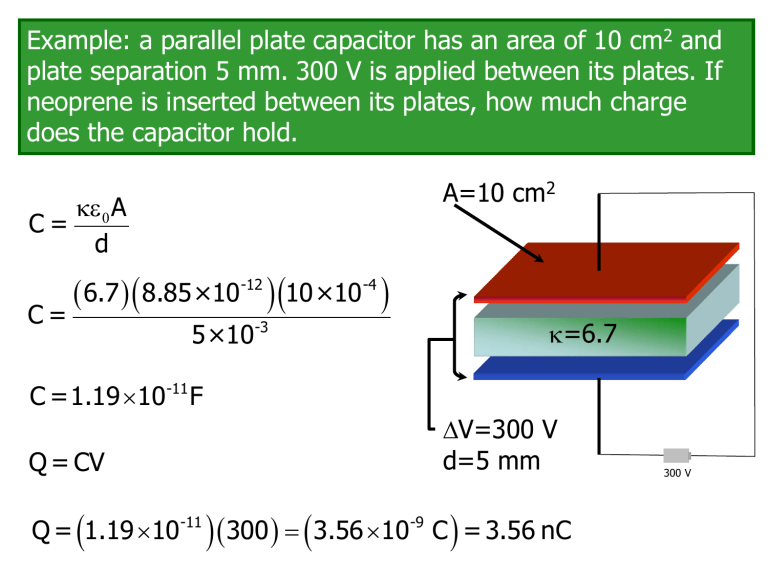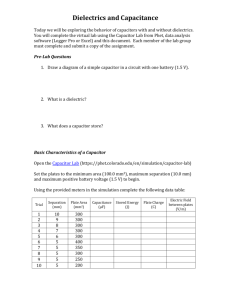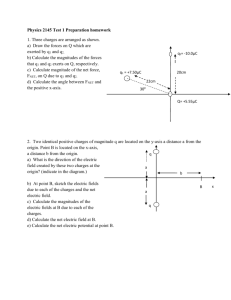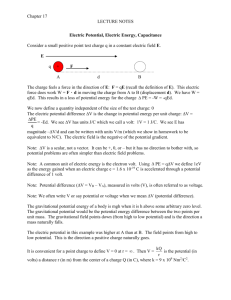PowerPoint

Example: a parallel plate capacitor has an area of 10 cm 2 and plate separation 5 mm. 300 V is applied between its plates. If neoprene is inserted between its plates, how much charge does the capacitor hold.
A=10 cm 2
C =
A d
C =
-12
10×10 -4
5×10 -3
=6.7
-11
Q = CV
-11
300
-9
V=300 V d=5 mm
300 V
Example: how much charge would the capacitor on the previous slide hold if the dielectric were air?
The calculation is the same, except replace 6.7 by 1.
Or just divide the charge on the previous page by 6.7 to get…
Q = 0.53 nC
A=10 cm 2
V=300 V d=5 mm
=1
300 V
Visit howstuffworks to read about capacitors and learn their advantages/disadvantages compared to batteries!
Conceptual Example
V=0
A capacitor connected as shown acquires a charge Q.
While the capacitor is still connected to the battery, a dielectric material is inserted.
Will Q increase, decrease, or stay the same?
Why?
V
V
Back to our Example: find the energy stored in the capacitor.
-11
A=10 cm 2
2
2
U =
1
2
1.19 10 -11
300 2
-7
V=300 V d=5 mm
=6.7
300 V
Example: the battery is now disconnected. What are the charge, capacitance, and energy stored in the capacitor?
The charge and capacitance are unchanged, so the voltage drop and energy stored are unchanged.
Q = 3.56 nC
-11
A=10 cm 2
=6.7
-7
V=300 V d=5 mm
300 V
Example: the dielectric is removed without changing the plate separation. What are the capacitance , charge, potential difference, and energy stored in the capacitor?
A=10 cm 2
C =
A d
C =
8.85×10 -12
10×10 -4
5×10 -3
=6.7
-12
V=300 V d=5 mm
Example: the dielectric is removed without changing the plate separation. What are the capacitance, charge , potential difference, and energy stored in the capacitor?
A=10 cm 2
The charge remains unchanged, because there is nowhere for it to go.
Q = 3.56 nC
V=?
d=5 mm
Example: the dielectric is removed without changing the plate separation. What are the capacitance, charge, potential difference , and energy stored in the capacitor?
A=10 cm 2
Knowing C and Q we can calculate the new potential difference.
Q
C
-9
-12
V = 2020 V
V=?
d=5 mm
Example: the dielectric is removed without changing the plate separation. What are the capacitance, charge, potential difference, and energy stored in the capacitor?
A=10 cm 2
2
2
U =
1
2
1.78 10 -12
2020 2
-6
V=2020 V d=5 mm
U before
-7
U after
-6
U after
U before
= 6.7
Huh?? The energy stored increases by a factor of ??
Sure. It took work to remove the dielectric. The stored energy increased by the amount of work done.
U= W external
A “toy” to play with… http://phet.colorado.edu/en/simulation/capacitor-lab
(You might even learn something.)







